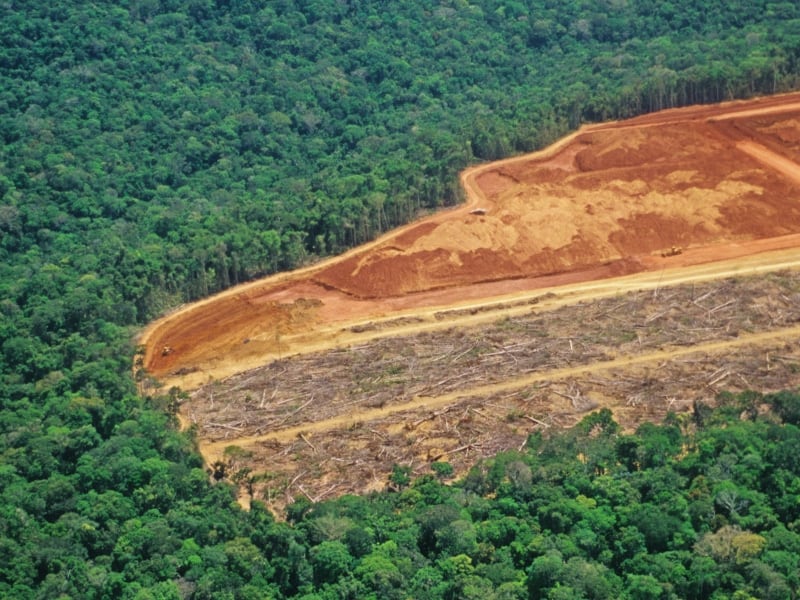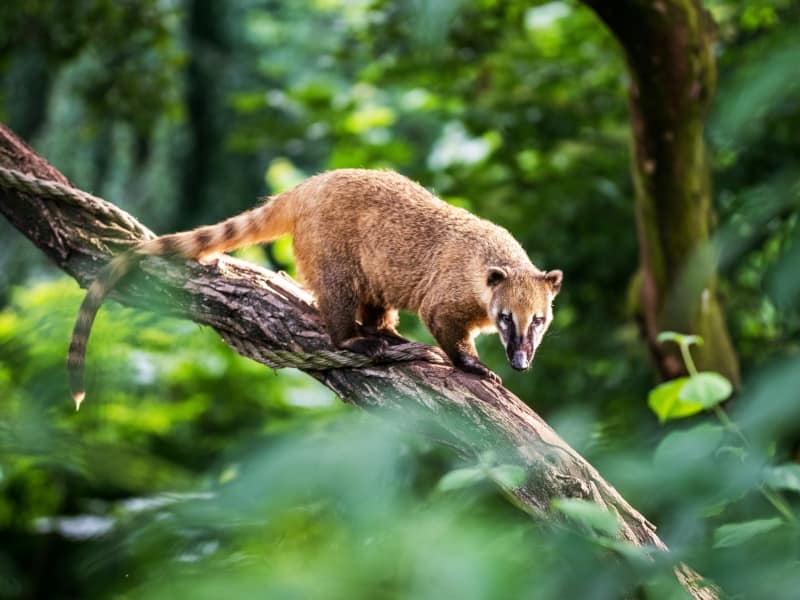Sugarcane plantations and deforestation threaten Brazil’s carnivores
Despite being overlooked in previous studies, coatis and ocelots can still be found in the Atlantic Forest of the Pernambuco Endemism Center (PEC), a biodiversity hotspot in Brazil. However, both species have low density, indicating severe population decline. New records highlight the importance of forest remnants to support the carnivorous fauna in this region.
The Pernambuco Endemism Center (PEC) is a section of the Northeast region of Brazil that faces the highest level of forest loss in the Atlantic Forest biome, with only 2% of its original formation remaining. 500 years of hunting and continuous deforestation since the colonization of Brazil as well as subsequent intensive land use, mainly for sugarcane plantations, have led to the local extinction of large mammals, leaving only those small and medium-sized.

While they are some of the most common carnivores in the Atlantic Forest, the ocelot (Leopardus pardalis) and the South American coati (Nasua nasua) are poorly known or in fact ignored in the PEC. Their very presence in this highly deforested region was even open to speculation, which led Brazilian scientists, aiming to reveal the current distribution and conservation status of these two species, to perform a comprehensive study, based on museum records, historical data and new information from field surveys through camera traps.

Findings point to an imminent local extinction of the species
The study, recently published in Mammalia, confirmed the presence of ocelot and coati in the PEC, thus increasing their distribution areas. However, scientists also detected an alarmingly low abundance of both species. Only seven recent records of ocelot were found in protected areas, while no individual coati was detected in exhaustive samplings throughout the forest remnants, with the last record 10 years previous.

Such findings point to an imminent local extinction of this species, while the low abundance of both species in relation to several other regions of Brazil indicates a decline in both populations due to the large and rapid expansion of sugarcane, which significantly reduced the size of PEC fragments. The Brazilian researchers’ records reveal the importance of remnant fragments to support carnivorous fauna in the PEC. The scientists thus stress that “the expansion and connectivity of these areas should be a conservation priority to prevent further local extinctions.”
Read the original article here.